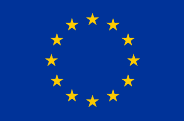
Safe non-food consumer Products in the EU and China
Conformity assessment is the process that a manufacturer must follow to in order to have evidence that his product complies with all applicable EU legislation. The process applies to all products, both products that must be CE-marked and products where it is illegal to affix the CE mark. This fact sheet provides an overview of the entire conformity assessment process and is supplemented by further fact sheets which provide more detail on each step.
The conformity assessment process has six steps:
The activities to be undertaken in each of these stages are described below.
Be aware that several directives may apply to a product. This is for instance always the case for electrical products and for electrical toys.
Do the following for each of the applicable directives:
Multiple standards may apply to the same product if a single standard does not address all relevant essential requirements.
Note: The full text of European standards can only be purchased from a national standardisation body. The following site of CEN (the European standardisation organisation) provides links to the national standardisations’ bodies’ websites. In addition, the China Standards Information Services Network can be used to access European standards.
Guidance on how to do this is given in the factsheet on risk management.
The product is tested to verify that it passes all tests that were identified in the pre-market risk management. See the factsheet on testing.
Guidance on how to do this is given in the factsheet on the technical file.
If the product has to be CE-marked, then the manufacturer must affix draw up and sign an EU declaration of conformity and affix the CE mark to the product.
The EU declaration of conformity is described in a separate factsheet.
The CE mark and the principles for its affixing to a product are described in detail in the factsheet on CE marking.
You may also visit the SPEAC ACADEMY to learn more about the EU Safety requirements.
The provided information was updated in 2022. Please note that some of the provided information could change during possible subsequent revisions of legislation, standards, and guidance documents. For any updates of official information on the EU product safety rules, please follow the Link to the webpage of the European Commission.
This document was produced with the financial support of the European Union. Its contents are the sole responsibility of SPEAC project and do not necessarily reflect the views of the European Union.

This website was created and maintained with the financial support of the European Union. Its contents are the sole responsibility of SPEAC project and do not necessarily reflect the views of the European Union.